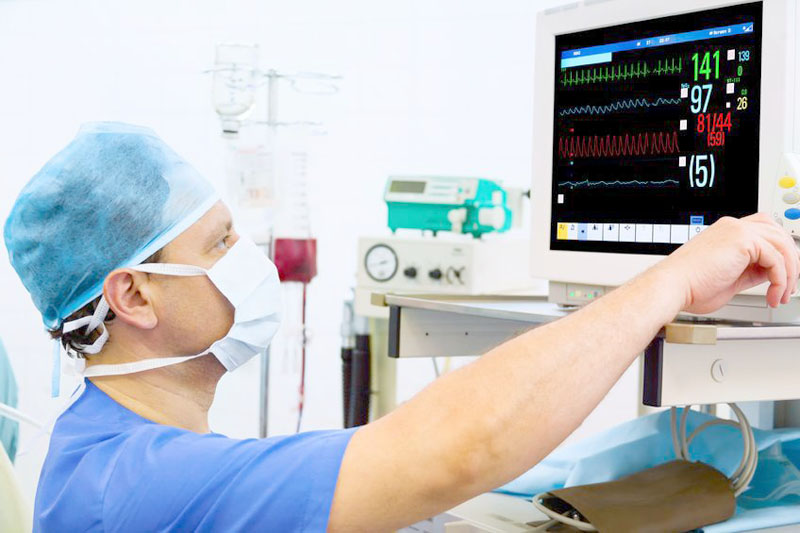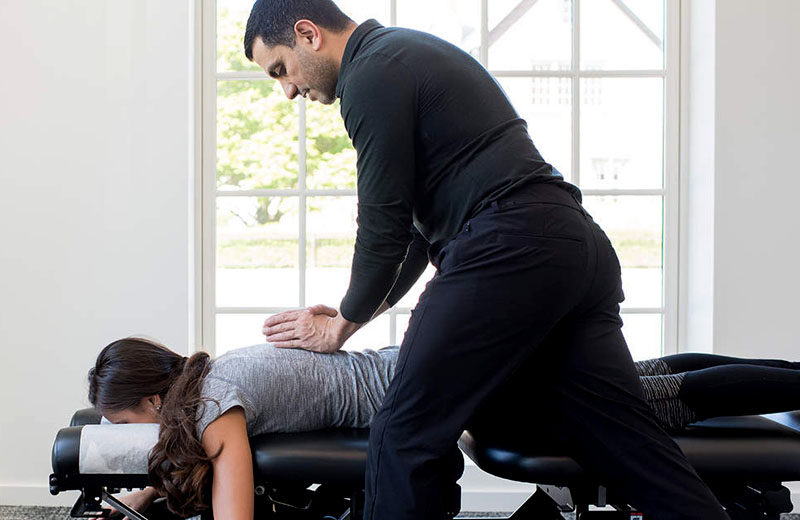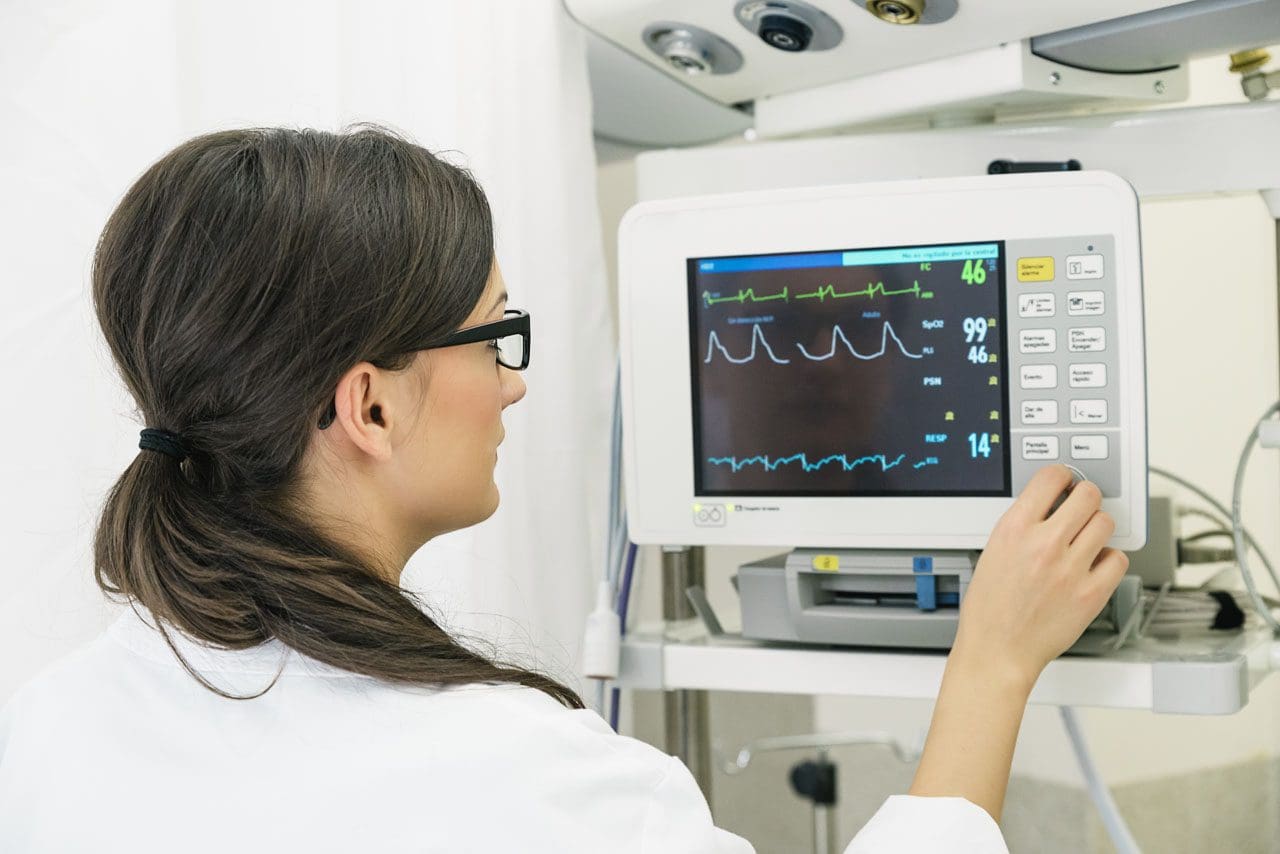Chiropractic Manipulation Under Anesthesia
Chiropractic manipulation under anesthesia also known as M.U.A is a non-invasive stretching and musculoskeletal manipulation technique. This type of chiropractic treatment can offer relief from chronic and constant back pain along with other types of pain that have not responded well or at all to conservative non-surgical care. Chiropractic manipulation under anesthesia breaks up adhesions/internal scar tissue that could be a result of an injury or previous surgery, helping restore the normal range of motion and reduce pain. This technique is utilized to treat:
- Back pain
- Neck pain
- Joint pain
- Muscle spasms
- Long-lasting pain syndromes
Adhesions can grow around:
- Spinal joints
- Nerve roots
- Inside the surrounding muscles
This can result in restricted:
- Movement
- Limited flexibility
- Pain

Undergoing chiropractic manipulation under anesthesia while sedated means the body is in a highly relaxed state. This sedation allows the chiropractor to adjust the bones, joints into proper alignment and stretch the muscles without the individual’s voluntary/reflexive resistance. And the sedation allows the chiropractor to use less force making the procedure painless.
Table of Contents
Manipulation Under Anesthesia Specialists
This type of manipulation is a specialty procedure. It is only performed by trained and certified physicians in the fields of:
- Chiropractic medicine
- Orthopedics
- Physical therapy and rehabilitation
- Osteopathy
Advantages to MUA treatment
There are individuals with pain that respond well to regular chiropractic manipulation, physical therapy, or exercise. However, depending on their condition, relief might only last for a few days or weeks. This is where manipulation under anesthesia could be more successful in improving the range of motion and relieve pain. Manipulation under anesthesia has been performed for more than sixty years. It can be cost-effective and safer than invasive treatment like spine surgery. It is recognized and covered by most insurance and workers’ compensation plans.

Determining if MUA is right for the individual and their condition
Manipulation under anesthesia is not for all individuals with back pain. Just like any other type of recommended treatment, a doctor will very carefully consider the individual’s medical history, symptoms, previous treatments, and effectiveness. MUA is only recommended for patients that meet the procedure’s criteria. Combined with an individual’s complete medical history, a doctor will also perform a physical and neurological examination. Test results will confirm the patient’s diagnosis and determine if anesthetic manipulation can help relieve pain and other symptoms. Tests can include:
- X-ray
- MRI
- CT scan
- A musculoskeletal sonogram uses sound waves to produce images of muscles, tendons, ligaments, and joints
- EKG – electrocardiogram is a test that checks for problems with the heart’s electrical activity
- Nerve conduction velocity test sees how fast electrical signals move through the nerve/s
- Pregnancy test
Consideration for individuals with:
- Pinched or entrapped nerve
- Chronic/Persistent neck or back pain
- Painful, restricted range of motion
- Failed back surgery syndrome
- Chronic sprains and strains
- Acute muscle spasms
- Fibromyalgia
- Chronic spinal disc conditions
- Fibrous adhesion/s

Not an appropriate treatment for individuals with:
- Uncontrolled diabetic neuropathy
- Spinal cord compression
- Morbid obesity
- Any type of cancer
- Acute or healing bone fracture/s
- Osteomyelitis vertebral bone infection
- Acute inflammatory arthritis
- Metastatic bone disease
- Severe osteoporosis
- Acute inflammatory gout
- Tuberculosis of the bone
- Co-existing medical problems could mean an individual may not be able to undergo any procedure that requires sedation
- Another reason why a patient’s complete medical history is vital
Procedure
This procedure is usually performed in an ambulatory surgery center that is a modern health care facility that is focused on providing same-day surgical care, for diagnostic and preventive procedures or at a hospital. An anesthesiologist administers the medicine/s. The patient could be sedated but not unconscious or general anesthesia meaning complete unconsciousness. The choice of sedation depends on a variety of factors, like the patient’s diagnosis and how severe the condition is. The anesthesiologist can recommend a specific type of medicine or a cocktail of medications for the patient’s comfort during and after.
Once sedated, the chiropractor utilizes specialized techniques to stretch, adjust and mobilize the affected areas of the spine and body. The manipulations free up fibrous adhesions or scar tissue in one or more areas of the spine and surrounding tissues. The procedure usually takes 15 to 30 minutes. The individual will be awakened and then is carefully monitored in a recovery area. Many report an immediate reduction in pain and a broader range of motion after the procedure. There is usually temporary muscle soreness, similar to the soreness after an intense workout.

Recommended aftercare
Before being discharged, the patient is provided instructions about aftercare therapy. Instructions may include:
- At-home warm-up movements
- Physical therapy rehabilitation
- Passive stretching
- Electrical stimulation
- Cryotherapy or cold therapy to reduce inflammation and pain
Sessions necessary
Depending on the diagnosis and response to the initial session, manipulation under anesthesia could be performed on consecutive days or two to four days sequentially. With each session, the chiropractor adjusts a little more, incrementally helping achieve the desired increase in movement and pain reduction/alleviation.
Physical therapy, exercise, and stretching
Three to six weeks after the procedure individuals continue with physical therapy to help prevent back pain from returning and any fibrous adhesions/scar tissue that was broken up from reforming. Exercise and stretching will help strengthen and stabilize the abdominal and spinal muscles and prevent pain from returning.
InBody
Malnutrition
Malnutrition is defined as a lack of uptake or intake of nutrition that can affect body composition in a negative way. These complications can affect how the body responds to diet and exercise. An important nutrient that elderly individuals might not get enough of is protein. Trouble chewing, food cost, and trouble cooking are all factors that limit elderly individual’s access to protein, which can lead to sarcopenia.
That is because protein requirements for the elderly are usually higher than younger individuals. This comes from age-related changes in the metabolism that includes a decreased response to protein intake. This means that an older individual needs to consume more protein to achieve the same anabolic effect. Micronutrient deficiency is a lack of nutrients, like minerals and vitamins. These support important bodily processes like cell regeneration, immune system function, and vision. A common example is iron and calcium deficiencies. This type of deficiency has the greatest impact on normal physiological functions that can occur in conjunction with protein-energy deficiency as most micronutrients are acquired from food.
Dr. Alex Jimenez’s Blog Post Disclaimer
The scope of our information is limited to chiropractic, musculoskeletal, physical medicines, wellness, and sensitive health issues and/or functional medicine articles, topics, and discussions. We use functional health & wellness protocols to treat and support care for injuries or disorders of the musculoskeletal system. Our posts, topics, subjects, and insights cover clinical matters, issues, and topics that relate and support directly or indirectly our clinical scope of practice.*
Our office has made a reasonable attempt to provide supportive citations and has identified the relevant research study or studies supporting our posts. We also make copies of supporting research studies available to the board and or the public upon request. We understand that we cover matters that require an additional explanation as to how it may assist in a particular care plan or treatment protocol; therefore, to further discuss the subject matter above, please feel free to ask Dr. Alex Jimenez or contact us at 915-850-0900. The provider(s) Licensed in Texas& New Mexico*
References
pubmed.ncbi.nlm.nih.gov/24490957/
Post Disclaimer
Professional Scope of Practice *
The information herein on "Chiropractic Manipulation Under Anesthesia" is not intended to replace a one-on-one relationship with a qualified health care professional or licensed physician and is not medical advice. We encourage you to make healthcare decisions based on your research and partnership with a qualified healthcare professional.
Blog Information & Scope Discussions
Welcome to El Paso's Wellness blog, where Dr. Alex Jimenez, DC, FNP-C, a board-certified Family Practice Nurse Practitioner (FNP-C) and Chiropractor (DC), presents insights on how our team is dedicated to holistic healing and personalized care. Our practice aligns with evidence-based treatment protocols inspired by integrative medicine principles, similar to those found on dralexjimenez.com, focusing on restoring health naturally for patients of all ages.
Our areas of chiropractic practice include Wellness & Nutrition, Chronic Pain, Personal Injury, Auto Accident Care, Work Injuries, Back Injury, Low Back Pain, Neck Pain, Migraine Headaches, Sports Injuries, Severe Sciatica, Scoliosis, Complex Herniated Discs, Fibromyalgia, Chronic Pain, Complex Injuries, Stress Management, Functional Medicine Treatments, and in-scope care protocols.
Our information scope is limited to chiropractic, musculoskeletal, physical medicine, wellness, contributing etiological viscerosomatic disturbances within clinical presentations, associated somato-visceral reflex clinical dynamics, subluxation complexes, sensitive health issues, and functional medicine articles, topics, and discussions.
We provide and present clinical collaboration with specialists from various disciplines. Each specialist is governed by their professional scope of practice and their jurisdiction of licensure. We use functional health & wellness protocols to treat and support care for the injuries or disorders of the musculoskeletal system.
Our videos, posts, topics, subjects, and insights cover clinical matters, issues, and topics that relate to and directly or indirectly support our clinical scope of practice.*
Our office has reasonably attempted to provide supportive citations and has identified the relevant research studies or studies supporting our posts. We provide copies of supporting research studies available to regulatory boards and the public upon request.
We understand that we cover matters that require an additional explanation of how they may assist in a particular care plan or treatment protocol; therefore, to discuss the subject matter above further, please feel free to ask Dr. Alex Jimenez, DC, APRN, FNP-BC, or contact us at 915-850-0900.
We are here to help you and your family.
Blessings
Dr. Alex Jimenez DC, MSACP, APRN, FNP-BC*, CCST, IFMCP, CFMP, ATN
email: coach@elpasofunctionalmedicine.com
Licensed as a Doctor of Chiropractic (DC) in Texas & New Mexico*
Texas DC License # TX5807
New Mexico DC License # NM-DC2182
Licensed as a Registered Nurse (RN*) in Texas & Multistate
Texas RN License # 1191402
ANCC FNP-BC: Board Certified Nurse Practitioner*
Compact Status: Multi-State License: Authorized to Practice in 40 States*
Graduate with Honors: ICHS: MSN-FNP (Family Nurse Practitioner Program)
Degree Granted. Master's in Family Practice MSN Diploma (Cum Laude)
Dr. Alex Jimenez, DC, APRN, FNP-BC*, CFMP, IFMCP, ATN, CCST
My Digital Business Card


